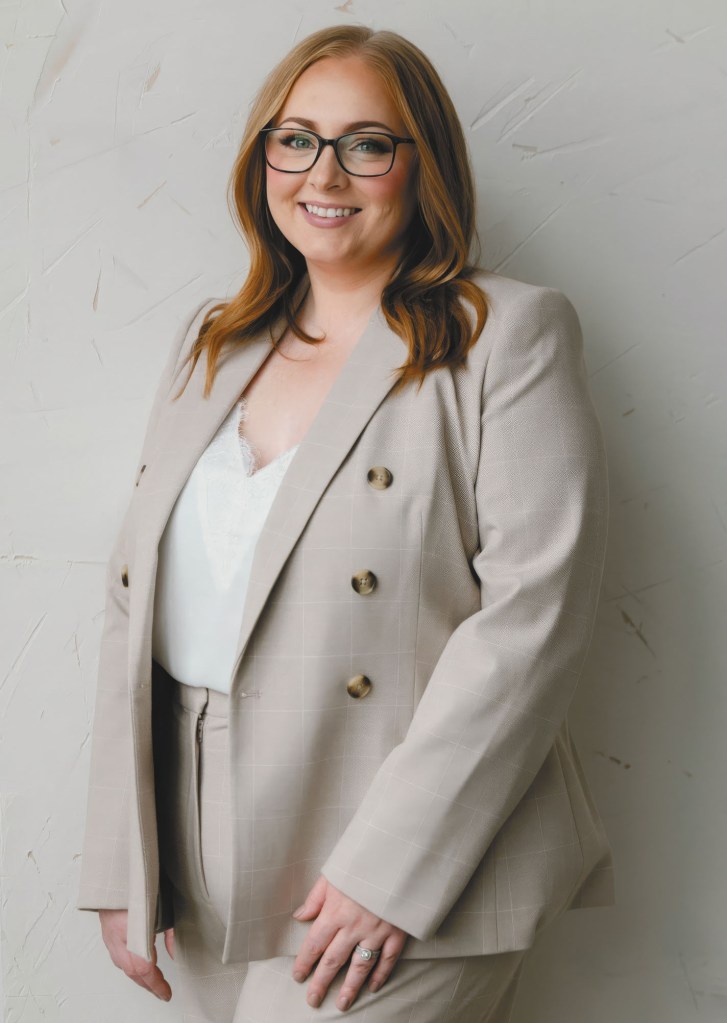The Innovator Next Door
By: Sheryl Feminis
Is your agency stuck in a rut? Pledge to see things differently in 2015. Meet five agents who made changes that mattered to the bottom line.
Power to the People (on Bikes)
McClain found a market and built a product
An insurance agency that’s 100% personal lines needs a leg up to stand out in the marketplace.
Claudia McClain got it when she noticed that people in the Northwest like to ride bikes.
“Washington and Oregon are meccas for bicyclists,” notes the president of McClain Insurance Services in Everett, Washington, north of Seattle. “It’s a highly green, environmentally conscious population.”
But if the area has a disproportionate number of bikers, it has enough hills to match—creating an opportunity McClain couldn’t pass up. “As people age, their legs will not take them up the hills as easily,” she explains. Often, they need an electric assist in the form of an electric bike or e-bike. It’s just that: A bicycle retrofitted or manufactured with an electric engine that helps propel it, while still allowing the rider to pedal.
A few years ago, “a client walked in and said he had purchased a $10,000 electric bicycle,” McClain says. “He said: ‘It’s covered on my homeowners policy, right?’ And I had to say: ‘No, it isn’t. Motorized vehicles are excluded from coverage on a homeowners policy.’” The cyclist had to bear all the risks of physical damage and liability himself.
Thus began McClain’s three-year journey to carve a niche in the U.S. insurance market for electric bike insurance, which she knew was already available in the United Kingdom. McClain Insurance offered it after convincing a carrier to issue coverage on a motorcycle insurance policy.
Figuring that $10,000 bicycle owners are good prospects for a personal lines agency, McClain hung out a shingle (autohomeboat.com/ebikes) for the shiny new electric bike insurance policy, and reached out to local shops that sell electric bikes. Licensed in Washington, Oregon and Utah, McClain draws leads from around the country—she recently fielded a call from a consumer in the southwest and helped by suggesting she tell a local independent agent to check with the carrier’s underwriting department.
“We tripped over it because we had clients who were avid bicyclists,” McClain said. “Our first hope was we could get primary insurance carriers to waive motorized vehicle exclusion.” But what her insurance innovation took, ultimately, was “getting to yes” about an unorthodox new idea with a carrier partner.
Improving Health, By the Numbers
Kapnick’s wellness program simplifies benefits
Research suggests health and wellness programs in the workplace help keep medical insurance inflation at bay. But as many as seven of 10 employees don’t use them, according to Jim Kapnick, CEO of Kapnick Insurance Group, a $24-million-in-revenues agency with locations in Adrian, Ann Arbor and Southfield, Michigan.
One reason: Employers and employees get confused by the plethora of providers within a benefits plan, since often, one company provides the insurance while another provides the wellness program. “We wanted to make it simple for a client to understand—so they feel we as the broker are not just handing them off to someone else and going away,” Kapnick explains.
The firm created Kapnick strive®, a comprehensive wellness program for benefits buyers with three key differentiators: a robust health assessment, financial incentives to improve health and a 65-year-old brand known to its base of 7,000 clients around the country for “leading clients in new directions that minimize risk and reduce cost.”
“It came about as we were trying to think like a client,” Kapnick says. “What’s the biggest cost to a client? Medical cost inflation. It was getting out of control, and clients were also concerned about the costs to employees. Statistics show that if you have a good wellness program, your costs will go down. But we needed employees to participate.”
Kapnick strive® begins with a confidential biometric assessment for clients’ employees, resulting in a health score for each. The program operates under the principal “if you can measure it, you can manage it”—numbers prove motivational. If the employee improves his or her score by a certain amount (flexible based on plan design), he or she earns a cost reduction. To help people cut their scores by improving their health, strive® provides tools like health coaching, screenings, behavior modification and disease-specific programs, all at the option of employer and employee.
Nothing is required, but the carrot of cost reduction gets buy-in and results, Kapnick says. “Because this is a performance-based mechanism with a financial incentive for each employee to go through and get a good score, the participation rates are between 75 and 90%,” Kapnick notes. Meanwhile, employers enjoy reductions of 26% in health costs, 28% in sick leave and 30% in workers compensation and disability management claim costs.
“If you can get your employees participating in wellness initiatives and taking a vested interest in their health, that will translate down to medical care costs,” Kapnick says.
Since the program is carrier-independent, it strengthens ties between Kapnick and its clients while building the independent agency’s brand value. And Kapnick’s CEO is putting money where his mouth is: He’s installed it for himself and his 140 employees.
Staff that Stays
Kennedy’s ‘Servant leadership’ approach reduces staff turnover
Cherry Creek Insurance Group boasts agency revenues of $10 million split 80% in commercial lines and 20% in personal. And 2014 has brought “an aggressive hiring mode,” with plans to bring on eight to 10 more employees by the end of the year, according to T. Scott Kennedy, president and COO.
Somehow, with more than 70 employees, the agency has lost only four service staff and producers in the past three years.
What’s the secret to such low employee turnover? There are many, but one is that this privately held Best Practices agency places a premium on its workplace culture using what Kennedy calls a “servant leadership” approach—meaning the culture aims to be employee-centric. “We have a very flat organization, where our management team shows up to work every day removing obstacles and creating opportunities for our staff—not getting in their way, but trying to make sure we are catering
to their needs,” Kennedy explains. “We are very sensitive to the needs of our team. Employee retention and the resulting client retention is paramount to our success.”
In order to uphold that commitment, the agency is “very intentional about taking care of the needs and wants of employees,” Kennedy says. “That includes automation. We make tremendous investments in staying on the leading edge of automation investment in our industry, making sure employees can be most efficient at doing their job in our marketplace. These things are near and dear to our heart.”
So too are community outreach, wellness initiatives and a “vibrant and gregarious workplace we’re very proud of,” Kennedy adds.
For its new hires, Cherry Creek will first recruit the service staff, then the producers. “Our service team must have capacity so we can continue to fuel organic growth,” Kennedy explains. “Salespeople create activity. Activity tends to create very high service levels for staff, so you’ve got to create capacity on the service side just ahead of the curve in bringing in salespeople.”
Hiring is both planned and serendipitous. “You hire the service person or people when you know you’re going to onboard salespeople ahead of that curve,” Kennedy says—allowing time for service people to “get acclimated to their desk and book of business before they get hit by the activity brought in by an aggressive salesperson.”
But the agency is constantly on watch for talented insurance professionals in sales and service in the local marketplace. “We’re always open to talent,” Kennedy says. “We will generally find room in our organization for a talented insurance professional. I’ve never seen a time in the history of our company where we’ve had doors closed to a talented person.”
Next-Gen Role Model
Bishop Consistently brings in producers new to insurance
Doug Bishop could be the face of his agency’s producer recruiting poster.
Fresh out of Florida State University in 1997, he joined Bouchard Insurance in his home state. Now he’s the CEO—and the cheerleader-in-chief for the agency’s producer in training (PIT) program, which welcomes eight fresh-scrubbed college grads and career changers every year.
“I’m a prodigy in this,” Bishop says. “I graduated college one month and went to work for Bouchard Insurance the next month. Eighteen years later, I’m still here.”
Bishop has overseen a 19.5% organic growth rate and a 90% average revenue retention rate since taking over as CEO in 2009. The agency pulls in $35 million of revenue in its five Florida locations with 215 employees.
But it wasn’t always that way. “In the early 2000s we were owned by a bank,” Bishop says. “We went private back in 2005. More than 50% of the sales force was over age 50. We knew we were going to have to develop producers.”
Enter: PIT, “designed to bring in people who don’t know anything about insurance,” Bishop says. “The most important thing we find out before hiring is if they have skills to be salespeople. We can teach the insurance part. Finding attitude, personality and sales skill set is what we can’t teach.”
Bouchard’s full-time recruiter seeks out and finds two “platoons” of four recruits each year. “We do quite a bit of hiring of inexperienced producers who are either just out of college or after their first job,” he explains. “We hire them from the ground up.”
Bouchard provides its recruits with 12- or six-month training programs for college grads and people with prior business experience, respectively. “We add a ‘business acumen’ curriculum for people right out of college,” he says.
Bouchard invests in its innovative program, employing two sales managers, a PIT supervisor, dedicated training specialists and a full-time recruiter who is constantly looking for talent. Plus, producers get involved in mentoring new recruits.
Bishop, 43, has watched the agency grow in generational waves: “The 40-plus year-old producers who were part of the program are now doing the mentoring and bringing up those who are now in the PIT,” he says. “We want to have a nice blend. We don’t want to have a cliff. We have a commitment to remaining private like many agencies, but you have to have a strategy to do that.”
Step Back to Step Up
Carroll implements service center model
![Michael Carroll Michael Carroll]()
Mike Carroll of Carroll Insurance Group in Maumee, Ohio is one of just five firms in the state on the 2013 Big “I” Best Practices list.
It achieved the status after Carroll decided to make a radical change: Switching to a carrier service center model.
Carroll—whose agency serves clients in and around the Toledo market that hugs the western shores of Lake Erie—had to take one step backwards to reach the level of Best Practices performance. “When we went to the service center model in 2008, we had an attrition,” he says. “We lost 17% of our revenues. We grew 14% for a net 3% loss” the first year.
But from a morale standpoint, the clients that left “were the 20% of the people making 80% of the work. It was like shedding massive weight.”
The new clients Carroll has landed since the changeover “totally get the service center model. We sell it as a benefit.” Personal lines insurance is a more labor-intensive product than the agency’s commercial business, which includes restaurant operators, law firms and pizza franchises, Carroll says. The business model means he dedicates his first submission of standard personal lines business to a carrier, which in turn provides the underwriting response as well as policy issue and then policyholder service 24/7. The math works for Carroll, since the service center model provides full commission levels, with included service center coverage in exchange for writing 100% of business through the carrier. The agency also has an alternative carrier market for substandard personal lines risks.
Carroll believes the added service coverage makes the agency more professional and accessible than before. “They can do it better than we can, all day long,” he says. And that’s important in a world of rapidly expanding consumer expectations. “Do we live in a world where people say ‘Give them a break’? That’s not the world we live in,” Carroll says. “It’s no longer a nine-to-five world. Our client base loves to be in touch. They can be out at a car dealer and buy a car at two o’clock in a Saturday afternoon. The phone actually gets answered ‘Carroll Insurance Group’ when they want to get that car insured.”
Sheryl Feminis is an IA contributor.










